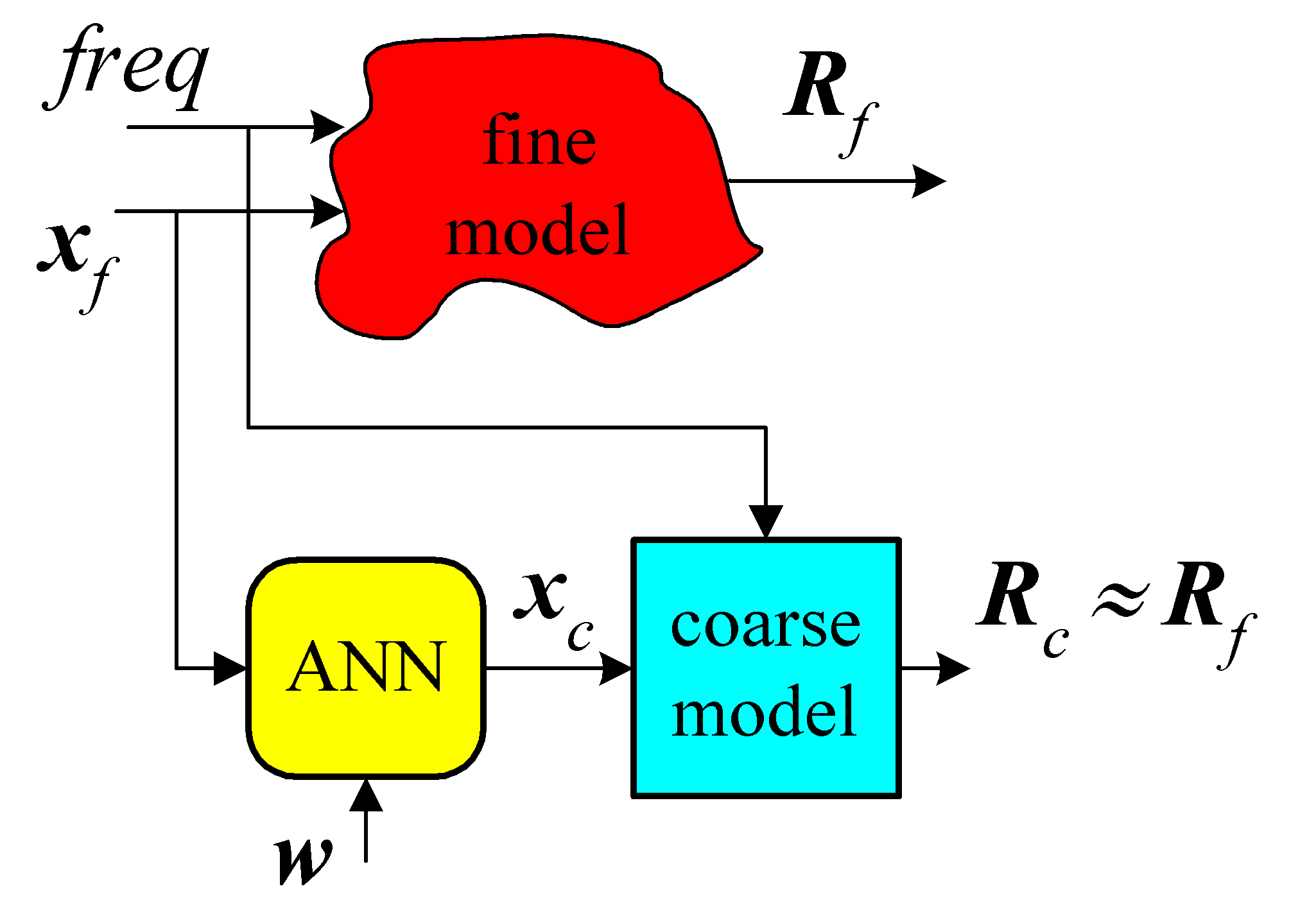Space Mapping Based Neuromodeling
Artificial Neural Networks (ANN) are very convenient in modeling high-dimensional and highly nonlinear components, as those found in the microwave and high frequency arena, due to their ability to learn and generalize from data, their non-linear processing nature, and their massively parallel structure.In modeling high frequency components the learning data is usually obtained from a detailed or "fine" model (EM simulator or measurements). This is generally very time consuming because the simulation/measurements must be performed for many combinations of different values of input parameters. This is the main drawback of classical ANN modeling. Without sufficient learning samples, the neural models may not be reliable.
We developed a powerful new concept in neuromodeling of microwave circuits based on Space Mapping technology. By taking advantage of the vast set of empirical or "coarse" models already available, Space Mapping based neuromodels decrease the number of EM simulations for training, improve generalization ability and reduce the complexity of the ANN topology with respect to the classical neuromodeling approach.
| Space Mapped Neuromodeling
(SMN) TechniqueLet the vectors xf
and xc represent the design parameters of the fine and coarse
models, respectively, and Rf and Rc the corresponding model responses at frequency freq.
Rf is accurate but slow to evaluate while Rc
is fast but not very accurate.
In the Space Mapped Neuromodeling (SMN) approach the mapping from the fine to the coarse parameter space is implemented by an ANN, as illustrated. Vector w contains the internal parameters of the neural network (weights, bias, etc.) selected as optimization variables. Once the mapping is found, i.e., once the ANN is trained, a space mapped neuromodel for fast, accurate evaluations is immediately available. |
 |
J.W. Bandler, M.A. Ismail, J.E. Rayas-Sánchez and Q. J. Zhang, "Neuromodeling of microwave circuits exploiting space mapping technology," IEEE Trans. Microwave Theory Tech., vol. 47, 1999.
J.W. Bandler, J.E. Rayas-Sánchez and Q.J. Zhang, "Neural modeling and space mapping: two approaches to circuit design," (invited), XXVI URSI General Assembley (Toronto, ON), 1999.
J.W. Bandler, M.A. Ismail, J.E. Rayas-Sánchez and Q. J. Zhang, "New directions in model development for RF/microwave components utilizing artificial neural networks and space mapping," (invited), IEEE AP-S Int. Symp. (Orlando, FL), 1999.
J.W. Bandler, M.A. Ismail, J.E. Rayas-Sánchez and Q. J. Zhang, "Neuromodeling of microwave circuits exploiting space mapping technology," IEEE MTT-S Int. Microwave Symp. Digest (Anaheim, CA), 1999, pp. 149-152.
J.W. Bandler, J.E. Rayas-Sánchez and Q. J. Zhang,
"Space mapping based neuromodeling of high-frequency circuits," Micronet Annual
Workshop (Ottawa, ON), 1999, pp. 122-123.
